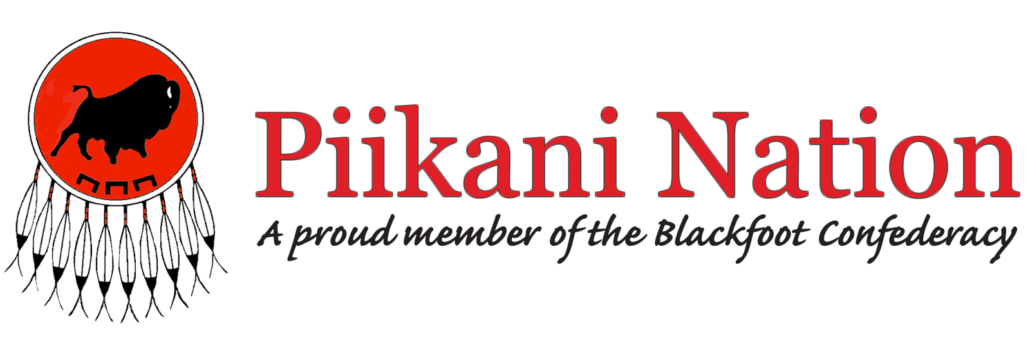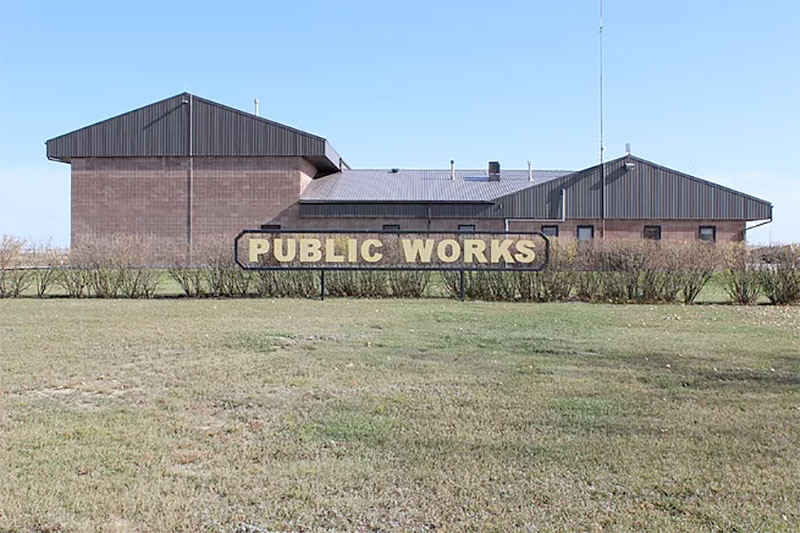Mission Statement
One of the primary responsibilities of any level of government is to protect and enhance the health and safety of its people and environment by upholding and adhering to all applicable laws, codes and regulations, also to safe guard capital investments. In the general area of public buildings, community infrastructure development, community public services, maintenance and other related activities this responsibility is mandated to the Piikani Public Works Department.
Background
Piikani Public Works undertakes responsibility for the operation and maintenance of all Nation owned public assets including; buildings, community infrastructure and required services as well as supervision of capital projects funded by AANDC Capital Investment.
Budget Accountability
Piikani Public Works has one major funding source, a contribution funding arrangement complete with terms and conditions of funding, including a year-end audit report requirement for both O&M and Capital Works. Annual funded maintenance budgets are examined against capital asset inventory with other funding sources are identified, rental agreements and user fees to ensure that all assets continue to be maintained and services delivered at an acceptable standard. Keeping in mind that deficit spending is stealing from the future.
Capital Programs
The Objective of the AANDC Capital Program is to assist Piikani to address priority needs in planning, design and construction of capital projects, to address the health and safety needs of the community.
Budgets
While O&M budgets refer to normal operating expenses, Capital budgets refer to the purchase of fixed assets with an annual Capital Allocation of which cash flow is released on Progress Claims.
Goals and Objectives
The function of Capital Planning is to maximize the buying power of any funding received for capital investment. This is done through long range planning, in carrying out a long range planning exercise; the needs of the community can be addressed in advance. When conducting a long-range plan we address five basic questions.
- How do we want to see our community developed?
- What do we want?
- What do we need?
- What can we afford?
- What about ongoing operations and maintenance sustainability plan?
The 5 year capital plan objectives of the Piikani Nation also are developed from the guidelines established in the Community Development and 3 year ACRS report.
Operation and Maintenance Overview
Purpose of O&M contributions is to subsidize the operating costs and maintaining of community infrastructure. Funding is provided by formula using the Capital Asset Inventory System (CAIS) with information contained in the Asset Condition Reporting System (ACRS) with applicable unit costs. O&M funding is provided for public facilities (buildings) that benefit the community at 20% of the national average cost estimate. Infrastructure (solid waste, water and wastewater) that services identified users at 80% of the unit cost. Main roads, streets and avenues are at 90% of the national average cost estimate rating, balance of costs is to be deprived from user fees.
Annual program funding, net cash-flow is allocated at the beginning of each fiscal year for O&M programs. Operating items under this budget include the numerous day to day expenses required to keep the department operating in its normal routine. Maintenance items under this budget are day to day routine activities required to keep buildings, vehicles and equipment in working order. Maintenance may include minor repairs which are more in the way of maintenance than renovation or replacement.
O&M Goals and Objectives
The Piikani Public Works Department will take every reasonable precaution to ensure all Band infrastructure systems and all facilities are not subject to down-time due to inadequate operational and maintenance procedures. Piikani Public Works makes every effort to establish a comprehensive yearly O&M work-plan identifying; projects, costs, funding arrangements and schedule of work.
Maintenance Management System (MMS)
What is MMS? “Maintenance is the last cost saving frontier of scientific management. Top management has concentrated on production for generations, largely ignoring maintenance. This attitude is slowly changing. Maintenance has become a major cost factor in the public and private sectors. The cost of maintenance is going up at an average of 15% per year.”
Piikani Public Works operated a manual maintenance management system beginning in 1985 and converted to Total Maintenance System (T.M.S.) software computerized maintenance management system in 1988.
Capabilities and features of the T.M.S. software program supports planning, scheduling (priority coding and distribution) and control for all related maintenance activities.
Benefits and Objectives of MMS.
Identification of high incidence of downtime
Analysis of causes
Maintenance quality control
Conservation of assets
Reduced operational costs
Improved utilization of work force
Improved inventory management
Improved budgetary planning and control
Fewer “panics and down time”
Maximum operation time and use of facilities at minimum cost
Means of collecting cost and other information needed to improve performance
Establish methods of evaluating work performance
Consolidate maintenance records and identify cost reduction opportunities
Our Staff
Floyd Provost – Director, Director of Disaster, Fire Chief.
Randy Wolf Tail – MMO.
MAINTENANCE AREAS
BUILDINGS
Maintenance for buildings is classified as Level 1in the MMS. This is maintenance required to keep buildings in their original condition with adherence to the National Fire Code. The overall objective is to ensure that buildings are kept in an acceptable condition to meet requirements of use as outlined in the National Building, Electrical and Plumbing Codes to maintain a safe and sustainable community.
WATER SUPPLY
The primary function of the water transmission and distribution system is to supply safe potable water to its users with reduced health risks. Water will be provided in adequate quantity and quality and at a satisfactory pressure with adherence to the latest edition of the Canadian Drinking Water Guidelines by Health Canada. The secondary function of a distribution system is to furnish fire protection at an adequate quantity and pressure.
WASTEWATER
The objective is to collect, treat and reduce health risks by safe disposal of wastewater from the collection system. Public Works is exercising an operational plan with preventative maintenance scheduled following the Guidelines for Effluent Quality and Wastewater Treatment at Federal Establishments by Environment Canada.
SOLID WASTE
The function of solid waste collection is to minimize damage to our environment by providing safe and controlled disposal of garbage. Solid waste management includes; collection day schedules, recycling program, re-use and a controlled transfer station operation. Our community collects and transfers solid waste to a regional landfill through a transfer station and direct disposal. Federal guiding regulations include the National Fire Code and Indian Reserve Waste Disposal Regulations.
ROADS
The primary function of roads is to provide a well maintained transportation network, connecting all parts of the reserve and linking it to the rest of the province. The reserve transportation system plays a key part in the functioning, growth, development, movement of goods and protection services within our borders. The Indian Reserve Traffic Regulations govern the operation of vehicles to allow safe mobility within and into the community.



